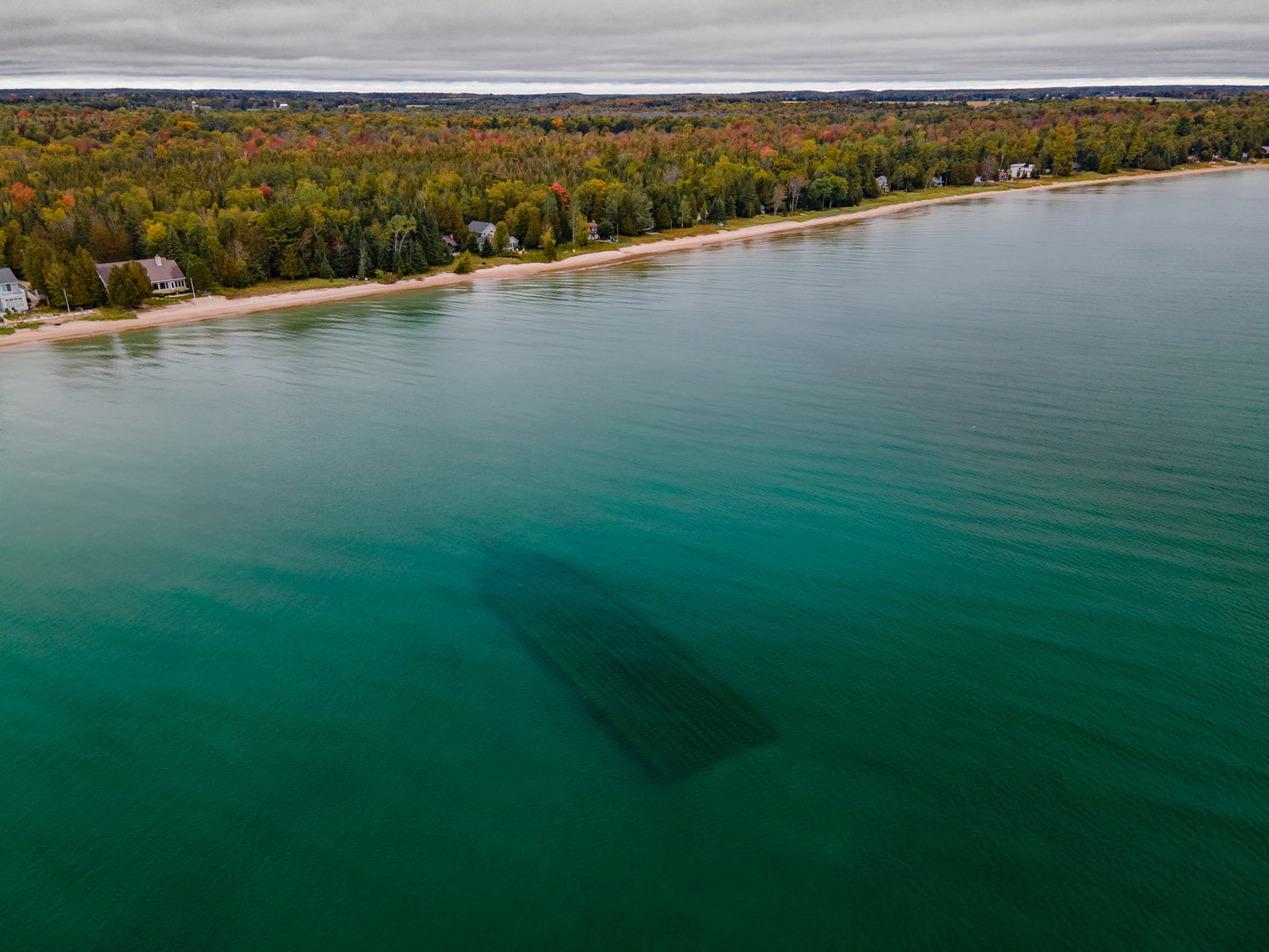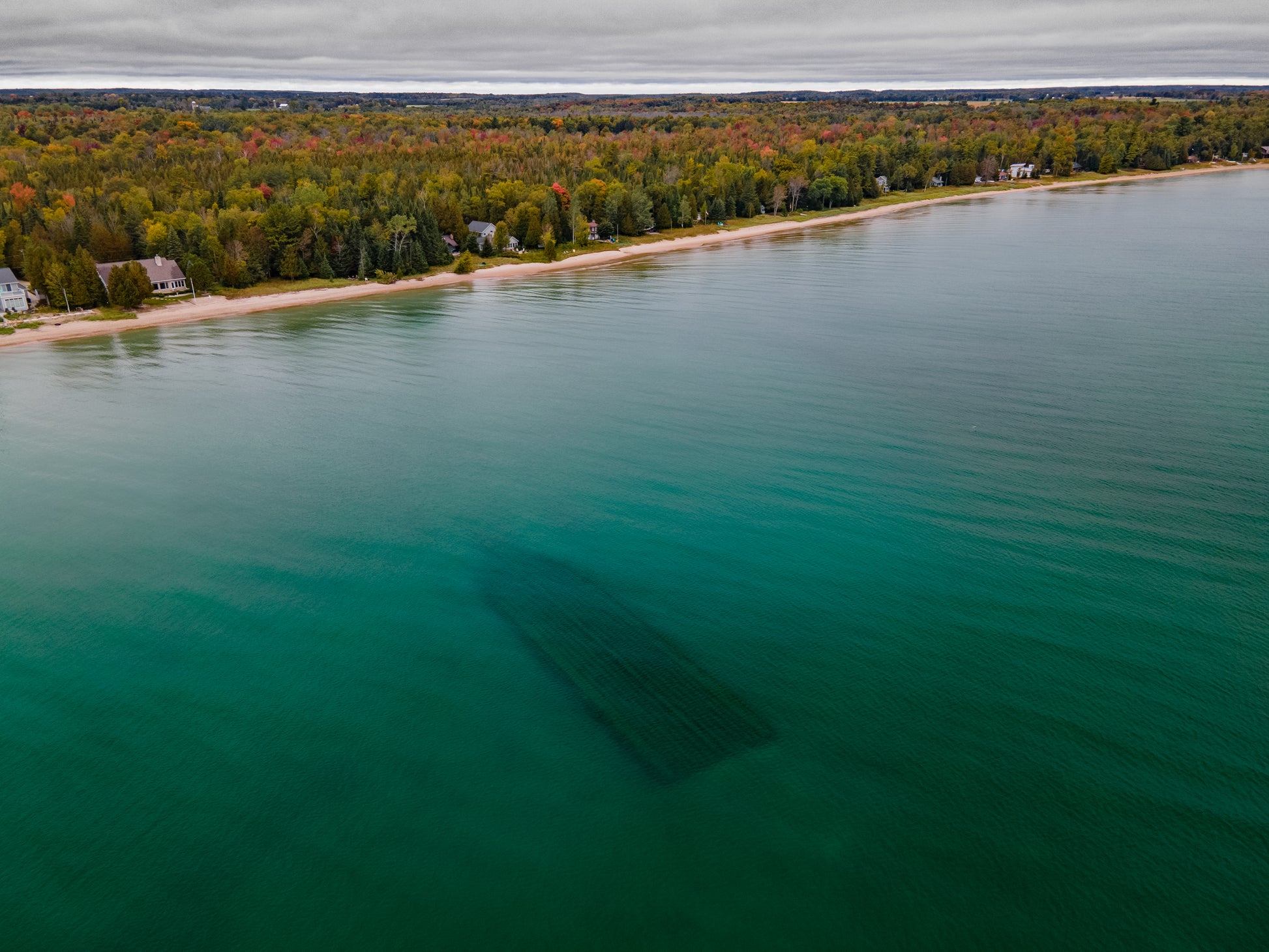City of Glasgow Shipwreck
City of Glasgow Shipwreck
Couldn't load pickup availability
he City of Glasgow lies in the shallows of Lilly Bay, her skeletal remains a quiet relic of the golden age of Great Lakes shipping. Though time and the elements have worn her down, her resting place offers a unique window into the history of commerce, shipbuilding, and navigation in Door County’s waters. She is just one of many vessels that plied these routes, a testament to an era when wooden steamers formed the backbone of Great Lakes trade, carrying raw materials that fueled America’s industrial expansion.
Built in 1891 by the Detroit Dry Dock Company, the City of Glasgow was constructed at a time when shipbuilding technology was shifting from wood to steel. Even so, she was a formidable vessel for her day, designed to haul heavy cargoes of iron ore, coal, and grain—the lifeblood of the Great Lakes economy. With a length of 235 feet, she was a workhorse, capable of making countless trips between major ports such as Chicago, Milwaukee, and Detroit. She was part of a vast fleet of freighters that navigated the narrow channels of Door County, threading through the islands and peninsulas that made this region both a vital trade route and a treacherous one to traverse.
The waters surrounding Door County were critical to the shipping industry, acting as a maritime crossroads between Lake Michigan and Green Bay. The Sturgeon Bay Ship Canal, completed in 1881, transformed the region’s importance, allowing ships to bypass the often-dangerous passage around the peninsula’s northern tip, where storms and unpredictable currents had claimed many vessels. City of Glasgow was one of countless freighters that relied on this shortcut, saving precious time on their voyages while helping Door County flourish as a maritime hub. Sturgeon Bay, already a major shipbuilding and repair center, became even more essential as fleets of cargo ships passed through.
Despite her role in this booming industry, the City of Glasgow eventually met the fate of many wooden freighters of her time. By the early 20th century, steel ships were proving far more durable and cost-effective, rendering wooden steamers obsolete. In 1917, she was deemed no longer fit for service, and rather than being dismantled, she was scuttled in Lilly Bay, where she remains.
Today, her remains are visible beneath the shallow waters, making her one of Door County’s more accessible shipwrecks. Unlike many wrecks lost to the depths of Lake Michigan, the City of Glasgow can be seen from the surface, a draw for kayakers, boaters, and aerial photographers alike. She is a reminder of the thousands of ships that once passed through these waters, of the sailors and captains who navigated the unpredictable lake, and of an era when Door County was a bustling center of maritime commerce. Now, rather than ferrying cargo across the Great Lakes, she rests as a silent witness to the passage of time, offering a glimpse into a chapter of history that still shapes the region today.
All prints are of museum quality and printed in The USA. Canvas Prints are wrapped around a hardwood frame to prevent long-term wrapping and utilize a 0.75" thick wrap. Metal Prints are glossy, vibrant, and of course are ready to hang. These prints make a statement and bring Door County home to your wall.
Share


